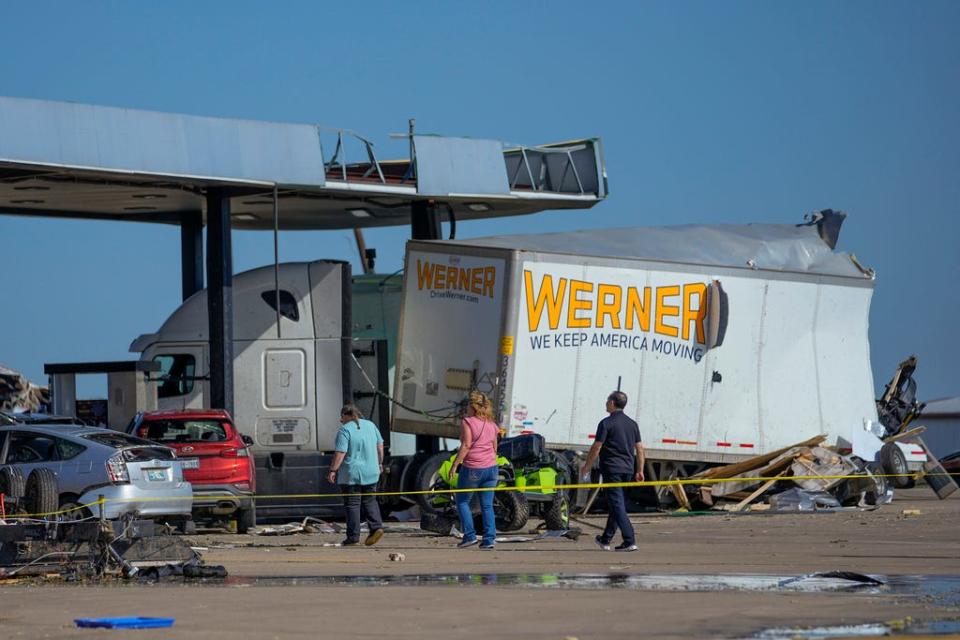Memorial Day weekend marred by severe weather — and it's not over
- Oops!Something went wrong.Please try again later.
Memorial Day weekend was marred by severe storms across the US.
More than 20 people died, and tornado warnings are in effect for Maryland, Texas, and other states.
Scientists blame the heat and say the severe weather will continue.
Memorial weekend is the unofficial start of summer, and this year it was marred by a series of severe weather incidents that scientists say could continue as temperatures rise.
Severe weather, including thunderstorms and tornados, swept across Texas, Oklahoma, Arkansas, and Kentucky over the holiday weekend, destroying buildings and killing over 20 people, according to the Associated Press.
Andy Beshear, the governor of Kentucky, declared a state of emergency on Monday after five people died in the state from incidents associated with the severe weather.
The storms moved to the Northeast on Memorial Day, placing the Washington, DC, metropolitan area under a tornado watch on Monday evening. Parts of Texas, the Lower Great Lakes, and the Mid-Atlantic continue to be under a tornado watch for Tuesday, the National Weather Service said.
The NWS warned of flash flooding in the Northeast and Mid-Atlantic region on Monday, and hail in the Southern Plains and Texas on Tuesday and possibly Wednesday.

Harold Brooks, a senior scientist at the National Severe Storms Laboratory in Norman, Oklahoma told the AP that a persistent pattern of warm, moist air is behind the string of tornadoes over the past two months.
Sjoukje Philip, a researcher at the Royal Netherlands Meteorological Institute, said that while attributing tornadoes to climate change is not straightforward, there is a link.
"With hotter sea surface temperatures, the air can hold more moisture. So I can also imagine that whenever there is precipitation, whether that's from a tornado or something else, there can be more rainfall, on shorter timescales. So that's a really clear relation," Philip told the AP.
The series of storms comes as temperatures climb in parts of the US, including Texas, where weather forecasters predicted temperatures of up to 120 degrees Fahrenheit this weekend in some parts of the state. And just last week, in Mexico, temperatures got so hot that multiple monkeys suffered heat stroke and were dropping from trees like apples.
Philip noted that 2023 was the hottest year on record and that average temperatures are expected to continue to rise, which could trigger more severe weather.
Read the original article on Business Insider

